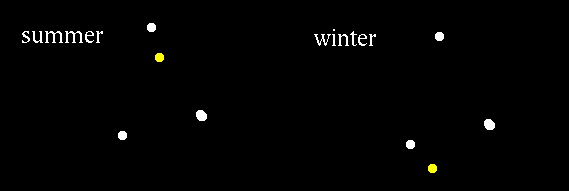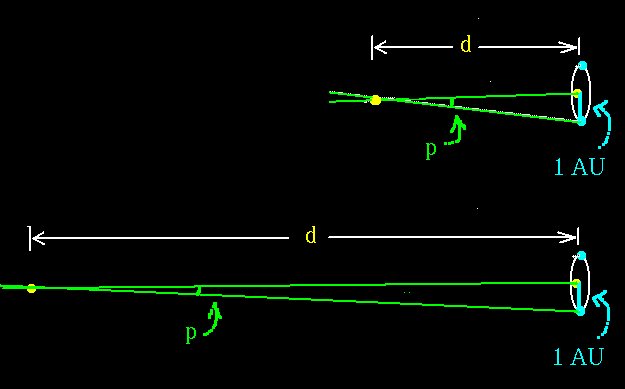
The apparent position of nearby stars against the background
of far-away stars changes as the Earth goes in its orbit
around the Sun:

Here is what we see:

We can measure the angle, called the parallax, p of the star:

In this picture we measure the parallax p, we know the size of 1 AU, so we can compute the distance d to the star.
If the distance were twice as far, the parallax would be twice as small:

Thus the relation is

The constant depends on the units used for the parallax angle and for distances (meters, AU, ...).
Astronomers like to measure angles in seconds of arc. For this quarter, we are measuring distances in light years. (There are 360 degrees in a circle, 60 arc minutes in a degree, 60 arc seconds in an arc minute, see units page about angle measurements and light years.) With this unit of angle and distance, the distance fomula is:

Davison E. Soper, Institute of Theoretical Science, University of Oregon, Eugene OR 97403 USA soper@bovine.uoregon.edu